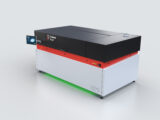Research seeks cost-effective methods to model migration from paper-based packaging
April 27, 2023One of the goals set in the EU Green Deal, which was adopted in 2019, is to significantly increase the share of recyclable and compostable packaging made from renewable raw materials. Both paper and paperboard represent important alternatives. However, if these are to be used in food packaging, they must also meet ever-increasing requirements regarding food-legislation compliance and evaluations of possible substance transfers to food, to ensure consumer safety.
Conventional testing methods lead to inaccurate evaluations
The current, conventional testing methods — for instance, applying hot water, cold water and solvent extracts to paper packaging — can lead to an overestimation of the actual level of migration to foods, resulting in an unfair judgment of non-compliance. The liquid simulants used in the process often interact with papers, and analytes that would not migrate to the food or would do so only to a lesser extent during actual use, could be released from the matrix through this testing method, leading to a negative evaluation of the paper. For dry foods, simulant E, i.e. the adsorbent modified-polyphenylene oxide (MPPO), may also result in an overestimation of actual migration.
Conducting storage tests for and subsequently analyzing food are both time-consuming and costly procedures. They are not transferable to other foods and cannot be conducted for all substances, therefore they are not an alternative to routine testing. So currently, there is still no reliable, quantitative understanding of the dominant transport processes in papers that could help define more realistic testing scenarios or predict migration via mathematical models without a significant risk of overestimation.
An improved testing system for paper packaging
The MigPAP project (IGF 22760 N) aims to map the migration of organic substances into and out of paper-based packaging in a more realistic way, for the purposes of both experimental testing and model-based predictions. In this context, estimations based on mathematical models represent a viable alternative that could be used on its own or as a supplement to conventional migration and extraction tests. The models will incorporate barrier layers and the impact of fillers. In addition to compliance testing, the project will also provide planning tools to help develop new paper formulations and packaging designs with the intended barrier properties. These tools will include virtual prototyping via simulations.
Migration and permeation testing at the Fraunhofer IVV
As part of the MigPAP project, the German research institute Fraunhofer IVV will investigate material-transfer processes experimentally via migration and permeation tests, using well-defined paper samples to begin with. On this basis, researchers will estimate the diffusion and distribution coefficients of the substances as they relate to various paper-related and environmental influencing factors (e.g., moisture) and use model-based simulations to generate kinetic data for their description of the process. They will then use the findings of the experiments and model-based methods (including comparisons with food) to formulate suggestions for how to make migration-testing experiments more realistic. In addition, the complex but realistic 3D simulations of material transfer through paper structures which the project’s partner University TUM is working to establish and which are necessary for developing an understanding of influencing factors will be re-simplified to the one-dimensional model level for compliance testing applications. Migration software solutions that are already established in the plastics sector will be used in this context. The relevant influencing parameters will be translated into an estimation formula for effective diffusion coefficients. The models are verified in comparison with experimental migration tests using actual packaging samples from industry partners. Once validated through this procedure, the scientific results will be transformed into easy-to-use tools for industry and testing laboratories and summarized in user-friendly guidance documentation.
Using models to estimate theoretical migration properties represents a new possibility for simplifying and consequently reducing the costs of testing and evaluation procedures for fiber-based packaging materials. Fraunhofer IVV’s goal is for companies in industry that apply these new findings to see a reduction in costs for services, raw materials and staff across the R&D process for paper packaging and an acceleration in their decision-making processes, as well as ecological benefits, an increased profit margin and, as a result, an improved level of competitiveness for their company.

